This article focuses on clean “octavers” – ie, pedals that pitch shift your tone by one or more octaves, NOT octave-up-style fuzzes. If you are looking for the latter, please check out our Octavia, Super Fuzz and Foxx Tone Machine guides and the list of all the new releases in the blog’s Octave Up Fuzz category.
—
Adding an octave effect to your rig can dramatically change your tone in fun and exciting ways: it can add a layer of heaviness to a power chord, create spacey synth-like melodies, bring blistering intensity to a fuzzy solo, or even turn your guitar into some kind of organ. And although the pedals listed in this article are clean pitch shifters, stacking them with a fuzz or a distortion can yield awesome results.
Clean octave pedals can be organized in several categories, like octave-up and both octave up and down (purely octave-down stompboxes are rare and normally reserved for bass); but also monophonic and polyphonic, with the latter able to reproduce more than one note at a time.
Keeping this in mind, we organized the categories in the article in the following way:


The Best Octave Pedals (Up & Down)
Icons ranging from Jimi Hendrix to Jonny Greenwood to Jack White to Tom Morello have used octave up and down devices to varied and powerful effect. This list is divided into analog octavers – which are monophonic and don’t “track” your playing as well but have character and nuance – and digital ones, which can track polyphonically (full chords).
Here are the best Octave pedals on the market currently.
Digital Octave Pedals (Polyphonic)
While analog devices have personality, they can’t cleanly track more than one note. With a polyphonic octaver, instead, huge organ-like sounds are available to you whenever you play a chord. Also, digital devices allow you to control other aspects of the octave signal, such as detune, modulate, and delay.
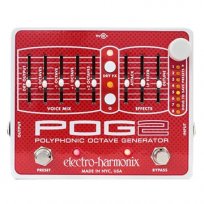
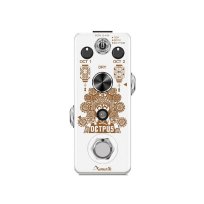

Electro-Harmonix POG3
The POG3 expands the NYC brand’s popular poly octave generator with an extra upper fifth, an Input gain, Enhanced multimode Filter with Envelope control, a Spread knob applied to the Detune function, and illuminated sliders. An OLED screen allows for easier navigation of parameters and the onboard 100 presets, which can be edited and transferred via a free app.
Boss OC-5
Boss was the first to launch a compact octave pedal back in 1982, the OC-2, of which the OC-5 is an evolution. The main new features include a Vintage mode (which faithfully recreates the mono sound of the OC-2), polyphonic enhancements, an octave-up feature for extended range, and improved tracking technology for accurate playability with no latency. Like its predecessors, The OC-5 is polyphonic and the variable Range knob restricts the effect to only the lower notes on an instrument, perfect for playing octave bass lines alongside normal chords and melodies in the higher registers.
Electro-Harmonix POG2
A deluxe version of the POG, the POG2 comes with 2 blendable octaves up and 2 octaves down, as well as an attack control, low pass filter with selectable Q, and a detune control for subtle or extreme pitch bend. Isolate the octaves on their own with the press of a button and access 8 easy to recall presets.
MXR Poly Blue Octave
The MXR Poly Blue Octave offers four separate polyphonic octaves (two up and two down) with a bunch of extra cool features. Each octave is polyphonic and has its own knob, allowing to precisely set its volume in the mix. The Mono switch lets you convert the circuit into a vintage, grittier monophonic octaver. The Dry knob lets you reintegrate the clean signal to bring back some “reality,” while the classic MXR Blue Box fuzz tone is also available at the press of a button. There’s also a dual modulation circuit that adds a Leslie effect in Poly mode (also applied to all 5 channels) and a Phase 90-type phaser in Mono mode.
Electro-Harmonix Pico POG
A mini version of the POG with more features than the Nano version. Whether you play single notes, arpeggios, or full chords, it will precisely track every note or chord that you play, allowing you to mix in your dry signal. It includes separate level controls for sub-octave and octave up plus an extra Dry out , for a total of three octaves. On top of that, it adds a new 3-mode filter that can do Tilt EQ, Low-Pass, and High-Pass filter, a feature missing in the previous, compact version, the Nano POG.
Flamma FS08
A compact polyphonic octave pedal by one of the newer, most popular Chinese makers of affordable pedals. It delivers four octaves (-1, -2, +1, +2) each with its volume knob, plus a Dry control and seven presets. The perfect tracking and simple but flexible control layout allow for a variety of beautiful tones.
TC Electronic Sub N’ Up
Part of TC’s Toneprint pedal series, the Sub’n’up is an octave pedal that combines some of the best features of various octave pedals into one unit. This is a rather simple but quality stompbox that is all about blending: there are knobs to control the wet/dry, octave up, and both octave down voices. There is also a toggle switch to dance between monophonic and polyphonic mode, which works with chords. There’s also a more affordable Sub N’ Up mini version with fewer controls.
Joyo XVI
An unusual but affordable take on the polyphonic octaver featuring knobs for sub-octave, upper octave, dry signal and also modulation – a rather fast one, whose speed is fixed. It features LED lights all around the pedal, configurable via a switch on the bottom of the case.
Earthquaker Devices Organizer
A polyphonic octave pedal with flavor, the Organizer includes blendable up and down octaves as well as a choir control which adds in a ghostly delayed 2nd octave up and down, resulting in a slightly detuned choir sound. The Lag control will delay the octaved signal more and Tone will control the color of the wet signal.
Mooer Purer Octave
An octave pedal with 15 different modes, accessible via the big rotary knob in the middle, including all possible combinations of single and double -1, +1, -2 and +2 octaves, and also some triple octave options, plus a Detune mode. It lets you fine-tune the volume of the Sub and Upper octaves via the two smaller knobs on the top, and to store two presets.
Coppersound Triplegraph
A collaboration between Coppersound and Jack White, this polyphonic octaver features three levers – replacing regular footswitches – activate an Octave Up (left pedal), an Octave Down (right pedal), and a kill switch or auxiliary FX loop (center pedal). A toggle switch allows the player to choose between the two modes for the center pedal.
Amuzik Octopus
Also sold under the Rowin label, this is an affordable octaver that gets good reviews on Amazon and delivers up, down and both up/down octaves with three separate controls for the octaves and the dry signal.
Walrus Luminary
One of the most versatile “octavers” around, with a four-octave generator that allows for a wide variety of tones, ranging from pipe organ sounds to otherworldly noises. There are 4 knobs for manipulating the waveforms. You can go up or down 1 or 2 octaves, or come up with any blend combination in between. A blend knob lets you find the perfect wet/dry balance, and the attack parameter allows for perfect tracking when set to the fastest setting – or a slower attack that adds a bloom to the sound. ‘Flutter’ adds a chorus-like modulation effect, and ‘Filter’ lets the player tailor EQ to play the best with their chosen rig. Has the ability to store up to 4 presets for quick access.
Subdecay Octave Theory
An inspiring device that can function like a normal octave up or down in manual mode, or introduce an array of creative octave-based modulation effects. Modulate your octaves using filters, envelopes, and LFOs, or try Shepard’s Tone mode, which creates a unique constantly rising or falling pitch shift effect. Inspired by vintage synths and 8 bit computing, this pedal can produce lo-fi chiptune sounds and sci-fi synth tones, along with access to 3 octaves up and/or down.
Mr Black Octaves
A simpler mini pedal that adds one octave above and one octave below the root, and it works with complex chords and even distorted signals. The three knobs control the volume of each octave: root, upper and lower.
RPS Effects Arcade Machine
A creative boutique pedal that re-synthesize your instrument as a square wave and then lets you harmonize that synthy tone with up to four octaves and an extra tone in intervals from a full 12-tone scale. The interval range can be controlled via expression pedal or control voltage (CV). A vibrato effect can also be applied at the end of the chain, controlled by the Depth and Rate knobs.
Paradox Effects Obsidiana
Another creative take on the octave pedal format that adds several extra features that will intrigue the more adventurous guitarists. It splits your signal into Two Octaves (1 up and 1 down) and sends them through a Low Pass Filter and a Delay (Retardo knob). A Direct knob lets you reintegrate the clean guitar tone. The two buttons on the top center of the pedals allow the tweaking of the Octaves’ character. The 2nd octave is a“Crystalized” octaver with syncopated ramifications, generating granulated maps of octaves that evolve in time, depending on the position of the “Regen” knob.
—
—
Analog Octave Up Pedals (Monophonic)
The analog octave up goes back to the octave fuzz pedals of the late 1960s, but a few builders have isolated just the unique ringmod-flavored upper octave that was a sort of byproduct of those early fuzzes. These effects work best if you play above the 10th fret on your neck position pickup. Stacking with fuzz or other dirt will also yield cool results and make the octave more prominent.
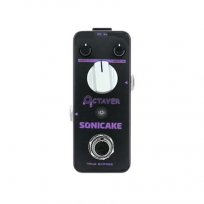
EarthQuaker Devices Tentacle
An analog, set octave-up effect, meaning it has no controls, only a preset sound. This might be a one-trick pony, but that one trick is executed flawlessly. The circuit is the same you’ll find in one of the company’s best selling fuzzes, the Hoof Reaper. Pairs well with other drive and fuzz circuits for adding octave into your lead tone.
Mythos Argonaut
Like the EQD tentacle, the Argonaut creates a no-frills analog octave up with a gnarly ring-mod-like tone to it. Cool on its own as a unique effect, or perfect for stacking with other fuzzes and dirt pedals for creating your ultimate octave fuzz.
ZVEX Jonny Octave
The all-analog Jonny Octave will produce add either one or two octaves up to your signal. Since this is a vintage style octave effect created through diodes and transformers, the effect is most pronounced when playing above the 12th fret using the neck pickup. Internal gain trimmers can dirty up the octaves.
Sonicake Octaver
An affordable, analog mini pedal that creates two low-octave voices with separate level knobs and also provides a knob for the dry channel.
TC Electronic Nether
A cheap take on the one and two-octave down from everyone’s ex-favorite pedal builder turned generic and unexciting. It gets lukeworm reviews on Amazon and no reviews on Sweetwater. Like many of the products released by TC after the Behringer acquisition, it’s not an original circuit but mostly based on the BOSS OC-2, if not a downright clone of it.
Analog Up/Down Pedals (Monophonic)
While still monophonic, blending in analog octaves up and down together can get you into synth-y territory. Just like all the pedals in this article, these all sound fantastic stacked with fuzz. There’s always a limit on how good the pitch tracking will be, but that is part of the charm of these – a sputtering upper octave can be an excellent and expressive effect. Octaves down will work on most notes except for the lowest on the neck, so they are perfect for adding some real drama to a solo.
Earthquaker Bit Commander
Despite the name this is not a Bitcrusher, but rather an analog octave synth based on the Micro Synth. You have access to 2 octaves down, 1 octave up, and a square-wave doubling your base tone. The filter cuts high frequencies of the octave signal. Monophonic but huge sounding!
Electro-Harmonix Microsynth
Another classic from EHX, the Micro Synth is an all-analog design that gives you 4 different mixable voices: your clean guitar signal, a lower octave, an upper octave, and a square wave base tone. The note attack of the voices can be changed for auto-swell effects. A 3-pole resonant filter with start and stop frequency sliders can modulate your signal in a host of funky and unique ways.
Foxrox Octron 4 / Octron 3
The latest evolution of Dave Fox’s famous analog octaver includes three footswitches for triggering each octave as well as your direct signal independently. The octave down comes with an extra Sub knob for adding in super low sub frequencies, that can either be 2 octaves down or 1 octave plus a 4th down. Both the Hi and Lo octaves have tone switches that alter their harmonic character. The Foxrox Octron 3 is a compact version of the same circuit with blendable hi and lo octaves, each with their own tone shift switch, and another volume control for your dry signal.
TWA MC-1 Microchasm
An all-analog octave down and up pedal in a compact chassis. Both octaves have volume controls. The octave down has a tone control and extends all the way down to a Bass guitar’s low G string. The upper octave is spitty sounding like from a vintage fuzz. Using an external footswitch, you can also switch between the octave up and down.
Mu-Tron Octavider+
A reissue of one of their most legendary circuits, the new Mu-tron octavider+ features a blendable octave down plus a blendable ring-modulated upper octave (RINGER knob). The Stabilize switch changes the octave tone slightly and greatly improves pitch tracking. Also comes with a switchable fuzz circuit on the second footswitch.
Octave + Reverb Pedals
Since the turn of the millennium, some builders have started creating circuits marrying octave up and reverb, which created a variety of effects from the Eno/Lanois Shimmer effect to other haunting sounds. This is a shortlist of the most popular devices in this category.
Earthquaker Devices Astral Destiny
A spacey, creative, multi-mode, modulated Reverb with 8 preset slots featuring a pitch shifting engine that can deliver upper and lower octaves and fifths and also ascending/descending bending pitch effects. The Stretch footswitch doubles the length of the reverb while adding an adjustable pitch-bending effect.
JHS 3 Series Octave Reverb
An affordable take on the so-called “Shimmer” effect, a circuit that marries a long ambient reverb with an octave effect placed in the reverb’s decay. The three knobs are for Verb, Octave and Decay, while the toggle switch gives you the option to switch the octave from octave-up to octave-down.
Walrus Audio Descent
Three Reverb modes (Hall, Reverse and Shimmer) can produce tones one octave above and below the original signal to create a symphony of sound. Eight rotary controls, several of which change function depending on the mode selected. Aux in for momentary switch can call up three custom presets.
Mojo Hand FX Octaverse
A rather unique and textural reverse reverse delay with an added up-or-down octave circuit. Three knobs for Rate, Mix and Feedback and one push button that switches the octave from up to down. The octave can’t be removed from the effect, and the Mix control will adjust the ratio between the dry signal and the reverse delay with the octave effect on it.
—
Extra Content: Octave Pedal Shootout Videos
A Guide to Octave Pedals (Reverb.com)
BOSS OC-5 vs Sub’nUp vs POG2 (Michael Banfield)
8 Octave Pedals, Compared (That Pedal Show)
















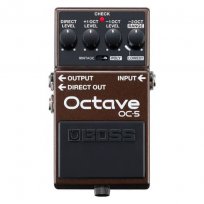

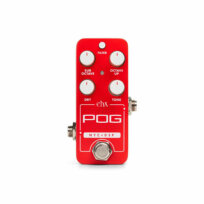
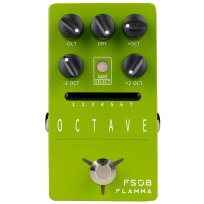
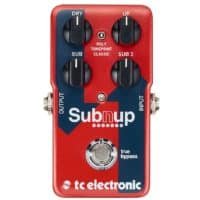
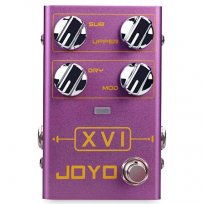
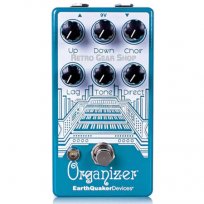
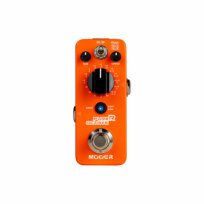
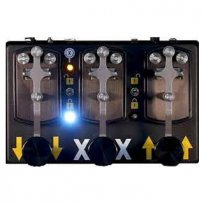
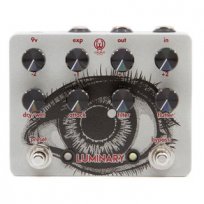

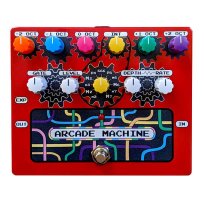
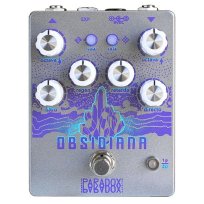

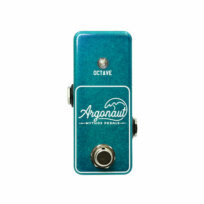

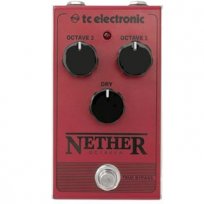
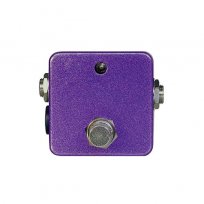
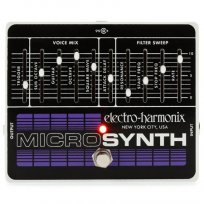
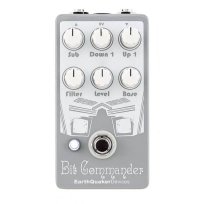
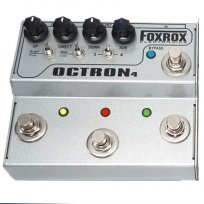
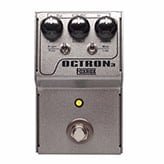
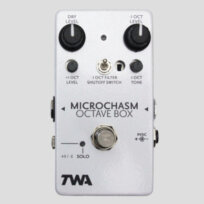
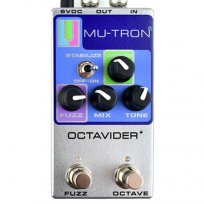
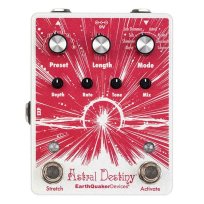

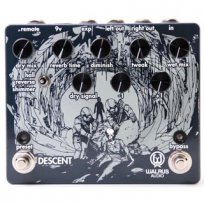
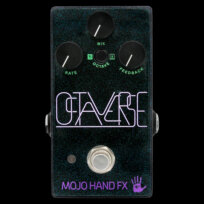








2 comments
Shawn says:
Jan 6, 2023
The TC Electronics Neither is NOT an octave up pedal at all. I is a 1 octave down, and 2 octaves down octaver.
TC is unexciting? While the Nether is from a lower budget/workhorse style of effects pedals, TC’s products throughout their history have already and easily proven more than “generic” and “unexciting”.
Anyhow, the TC Electronics Neither is from the Boss OC-2 school of octavers. As is the much cheaper Behringer Ultra Octaver UO300.
Both of these sound fairly comparable to the Boss OC-2. I have an OC 2, and my ears are not lying.
I am interested in the TC Nether Octaver because of its sound, apparent build quality, and low price. My OC-2 may not last forever, and Boss does not make them anymore.
Paolo De Gregorio says:
Jan 11, 2023
Thanks for the note, Shawn, we corrected the blurb of the Nether. FYI, we didn’t say that TC was always unexciting, but it has become (for the most part) unexciting after it was bought by Behringer, a company with an approach to business that we often find problematic and uninspiring.